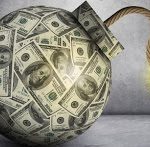 The USD traded sharply lower against all of the major currencies on Thursday with the Australian and New Zealand currencies leading the gains. Nearly 48 hours after the US Presidential election, no winner has been declared; the picture is expected to get clearer on Friday. However, President Trump has made it clear that he will contest the tallies in all recent Biden won states. Even if he files lawsuits across the nation that would be too big of a margin to legitimately dispute.
The USD traded sharply lower against all of the major currencies on Thursday with the Australian and New Zealand currencies leading the gains. Nearly 48 hours after the US Presidential election, no winner has been declared; the picture is expected to get clearer on Friday. However, President Trump has made it clear that he will contest the tallies in all recent Biden won states. Even if he files lawsuits across the nation that would be too big of a margin to legitimately dispute.
Based on the price action in the equity and currency markets, investors don’t seem worried about a contested election or more US political uncertainty. It was another strong triple digit day for the Dow Jones Industrial Average.
Risk currencies were up across the board. This had nothing to do with the FOMC meeting which had very little impact on equities and currencies. The Fed’s decision to leave interest rates and the size of the Quantitative Easing program unchanged was widely anticipated. There were no surprises in the monetary policy statement. Fed Chairman confirmed that the pace of improvement in the economy has moderated and that further support is needed from monetary and fiscal perspective.
October non-farm payrolls are scheduled for release on Friday. Job growth is expected to slow but the unemployment rate and average hourly earnings growth are expected to improve. This is consistent with the decline in the employment component of non-manufacturing ISM and the sharp slowdown in job growth reported by ADP. US companies added fewer jobs in October but they are hiring and the unemployment rolls are falling.
Like today’s FOMC announcement, unless tomorrow’s jobs report departs significantly from expectations, the impact of NFPs on the dollar and stocks will be short-lived. The main focus is the US election and there’s a reasonable chance we’ll know the outcome by Friday.
Meanwhile GBP soared after the Bank of England monetary policy announcement. The central bank left interest rates unchanged and boosted their bond buying program by GBP 150 billion, larger than expected. Yet the currency rallied because the central bank did not send any strong signals about negative interest rates and the Treasury extended their Coronavirus Job Retention Scheme that would provide furloughed employees 80% of their usual salary for hours not worked for the next five months.
The CAD rose to its strongest level in more than a month ahead of Canada’s labor market report. While economists are looking for significantly fewer jobs added in the month of October, the unemployment rate is expected to improve. The Australian and New Zealand currencies performed well on the back of stronger Australian trade data. Australia’s PMI services report is due this evening and evidence of a further recovery is anticipated.